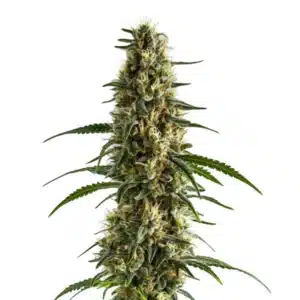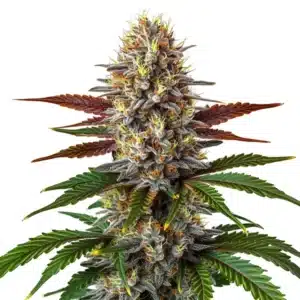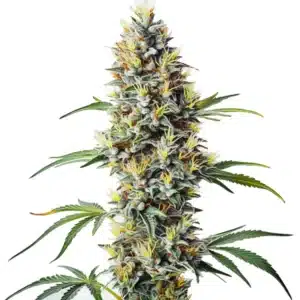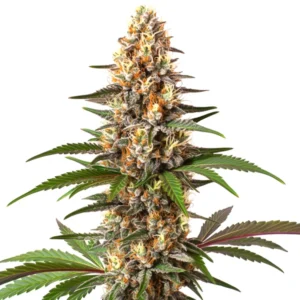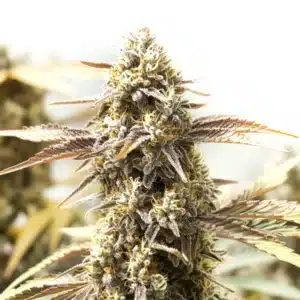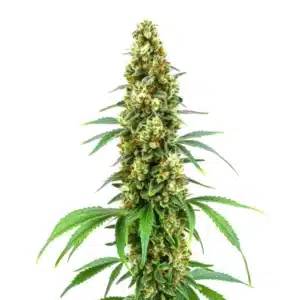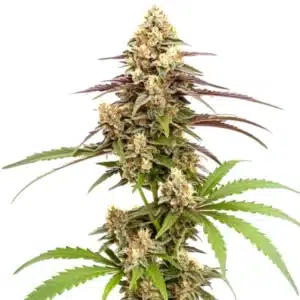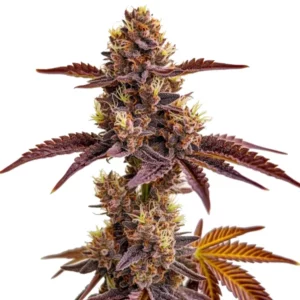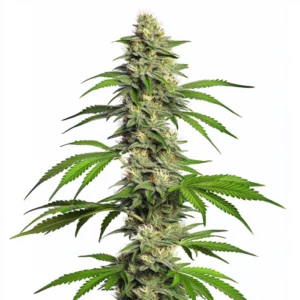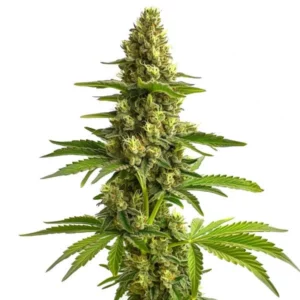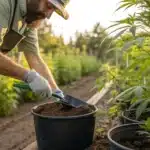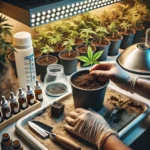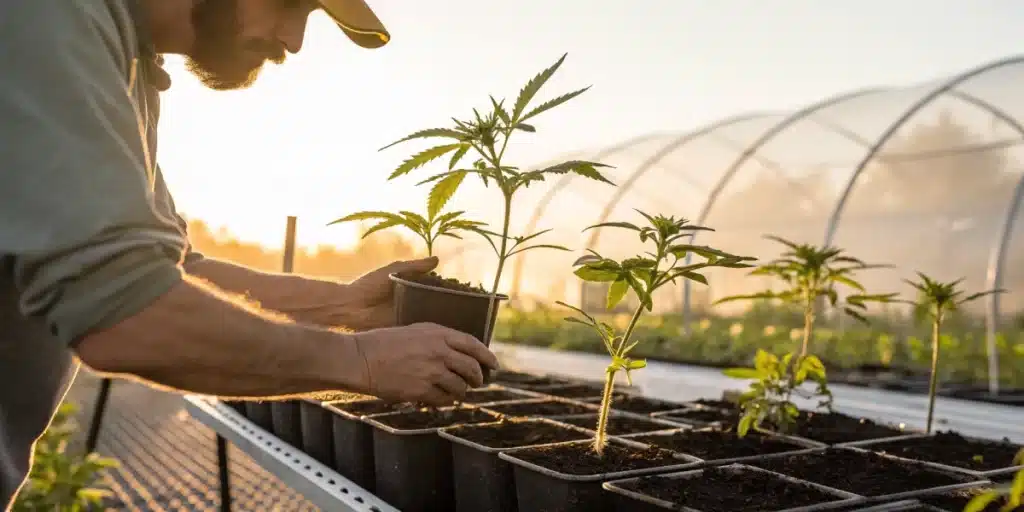
When To Transplant Cannabis Seedlings
All the time the people in the new growers ask when to transplant cannabis seedlings. Knowing when to repot weed seedlings is crucial for healthy growth. Transplant marijuana seedlings when they have developed their first one to two sets of true leaves, which is typically 2–3 weeks after germination, or when their leaves start to outgrow their current container. Key signs it’s time to transplant include roots poking through the drainage holes, the plant becoming too tall for its pot, or a noticeable slowdown in growth.
Transplanting involves relocating a cannabis plant, either by moving it to a larger pot with more soil as it grows, or simply transferring it to a larger container. Generally, the most expert growers start in small pots of more than 500cc for the seedlings and when they are solid, they are transplanted to new pots so that they continue growing.
Recommended Strains
Clementine
|
|
THC | 18% - 22% (Medium) |
|
|
Type | Feminized |
|
|
Yield | Low |
|
|
Phenotype | 30% Indica / 70% Sativa |
Biscotti Mintz
|
|
THC | 22% - 25% (Medium) |
|
|
Type | Feminized |
|
|
Yield | High |
|
|
Phenotype | 80% Indica / 20% Sativa |
Why should plants be transplanted?
Transplantation provides a marijuana plant’s root system with additional space to expand, facilitating healthy growth and robust development. This is particularly important in the early stages of a seedling’s life. Knowing when to transplant cannabis seedlings can make a significant difference in their development and help minimize the risk of autoflower transplant shock, which can slow growth and affect yields.
When roots are confined and unable to spread, they may become entangled and “rootbound,” ultimately suffocating the plant, resulting in stunted growth, poor health, and potentially death. A robust root system is essential for the well-being of a marijuana plant. This underlines the importance of determining the optimal time when to transplant cannabis seedlings from smaller to larger pots as they grow.
The size of the plant’s container dictates the extent to which the roots can grow, consequently influencing the plant’s overall size. Using a container that is too small can hinder its growth. Knowing the right time to transplant cannabis seedlings is essential to give them enough space to grow and avoid becoming rootbound.
Typically, most marijuana growers initiate seed germination in small containers such as 4-inch pots or 1-gallon containers. For successful seedlings, larger containers become necessary after a few weeks of growth, requiring transplantation into bigger pots or directly into the ground. This step is critical, and knowing when to transplant cannabis seedlings ensures that they have adequate space to continue their growth without limitations.
Promos & Deals
The cannabis seedling transplant
If you’re utilizing traditional pots, a clear signal for knowing when to transfer your cannabis plants is when the roots become visible through the drainage holes at the base. Additional indicators include a decrease in plant growth rate or visible signs of wilting.
This process involves transplanting the seedlings at an opportune time, ideally just before they outgrow their current container. By using buckets, you can easily discern the need to repot when roots begin to emerge. However, if you start with a cup or small pot, you must rely on visual cues on the surface. Typically, when the seedling’s true leaves have fully expanded to cover the circumference of the container and there is noticeable vertical growth, it is time to transplant.
Delaying transplanting can cause the plants’ roots to become tangled, which will require considerable time to recover and may remain permanently stunted. It usually takes 7-10 days for a seedling to establish roots and grow out of small starter pots of 1 liter or less.
Risk transplant cannabis seedling
Transplanting cannabis seedlings can be a stressful process, both for the plants and their growers, considering the sensitivity and fragility of root hairs. This transition removes the seedlings from their familiar environment, and mishandling can easily damage the delicate root system.
What’s the optimal method for transplanting cannabis seedlings? Carefulness is key! Timing plays a crucial role, particularly when transplanting outdoors. Here’s a step-by-step guide to ensure a smooth transition for your plants:
- Hydrate the plants thoroughly the day before transplanting to ensure the soil is moist.
- Choose a cloudy day for transplanting and schedule it for later in the day, allowing the plant to rest overnight before exposure to the next day’s light and sun.
- Dig a suitable hole in the new pot or ground, ensuring it’s deep enough to accommodate the plant and its root ball, this is a common oversight. Ensure the hole is well-watered to facilitate immediate contact between the roots and moist soil.
- Water the plant shortly before transplanting to keep its roots moist.
- Gently squeeze the sides of the pot (if using plastic) and carefully remove the seedling, placing it into the prepared hole.
- Firmly pack the soil around the seedling and pat it down to stabilize the plant.
- Water the plant again to settle the soil.
- Ideally, provide shade or protection from direct sunlight for at least three days to allow the plant time to recover from the transplant shock.
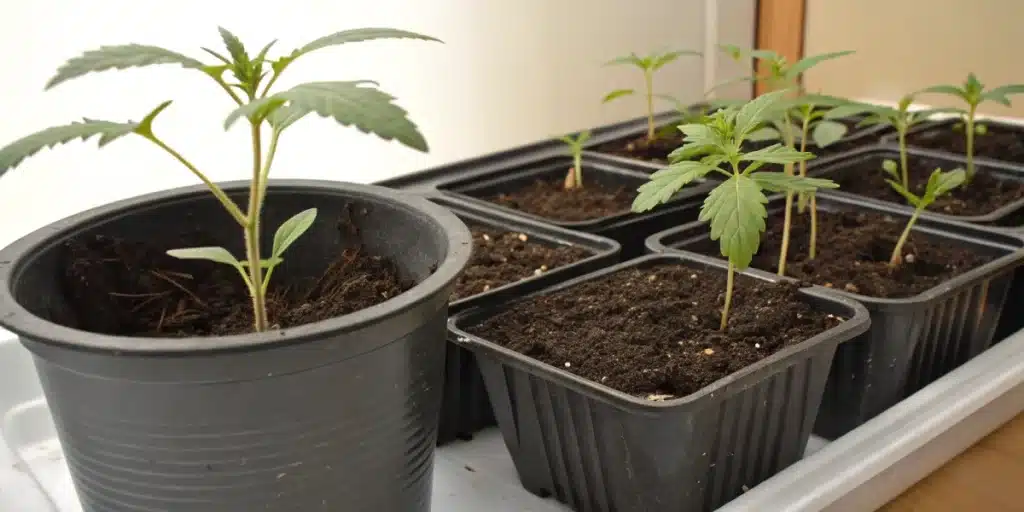
Tips to get the best transplant
It is important to take into account the following advice if you want to make good transplants of cannabis seedlings. Many times it is not only influenced by When To Transplant Cannabis Seedlings but also other factors that are essential for everything to be perfect. Now we will see the main factors to take into account before making a good transplant of seedlings.
When To Transplant Cannabis Seedlings: Select the correct cannabis seeds
This seems like an obvious point, but it’s a common problem: “I got these seeds from a friend, but they won’t germinate…” It’s essential to purchase seeds from reputable sources or local dispensaries. While your friends may mean well, they may inadvertently provide you with seeds that produce male cannabis plants (which do not produce THC-rich buds). Additionally, the seeds themselves may be too old to germinate. Therefore, to ensure a thriving plant, it is essential to start with a healthy seed.
Not sure where to buy top quality seeds? Here at Blimburn Seeds you can buy seeds of the highest quality that guarantee excellent germination ratios as well as strong and healthy plants. To have resistant and high-quality plants, it is necessary to germinate seeds that meet these qualities, that is, to be genetics of reputable quality.
Use correct techniques to germinate seeds
The technique or way of germinating cannabis seeds is influential because, if you do not use the correct way, you may suffer problems when the process progresses.
For example: Many times gardeners exceed the humidity when germinating seeds. This can generate some type of fungus that damages the emerging root or produces some type of harmful pathogen when the plant grows.
It may also happen that you allow more time than the time required for the seed to germinate and the cotyledons end up appearing. The above can generate extra stress on the seedling when it is already in the substrate. Therefore, you can cause the cultivation of these plants to be slower and the seedlings to be weaker.
Another common case is that the main root that emerges from the seed becomes twisted in the process. The above can cause the seedling to emerge from the substrate with crooked growth or higher stress levels. For this reason it prevents the main root of the seeds from curling up when they germinate.
The perfect temperature for cannabis seedlings
Temperature is essential for seedlings as well as for adult plants. However, maintaining a good temperature when the seedlings are growing in the first weeks will help you have cannabis specimens that will be much more resistant when transplanting them. It will also help you so that the adult plants are ready to deliver everything, especially in flowering.
If you plan to transplant them outdoors, you should consider moving them to a sunny window during the first or second week, right after they begin to emerge from the substrate (avoid prolonged periods of direct sunlight). Once they have developed two or three sets of serrated leaves, they will have sufficient strength to thrive under sunlight. Gradually increase their exposure to the sun to help them acclimate to outdoor conditions.
Lights for seedling
If you’re cultivating indoors, seedlings can be placed under artificial light as soon as they sprout from the soil. Distances will vary depending on the wattage, but as a general guideline:
- For high-density discharge lamps, seedlings should be positioned at a minimum distance of 50 cm from the bulb.
- If using a compact fluorescent lamp, keep the distance around 15 cm; with regular fluorescents, just a few centimeters away is sufficient.
- When using LED lamps, maintain a distance of approximately 30 cm.
Seedlings also require a gentle breeze to strengthen their stems, reducing the likelihood of drooping as they mature. A small household fan set on low power and oscillating can serve this purpose, ensuring that plants don’t receive airflow from just one direction. If you notice gentle movement in the plants, the breeze is adequate for reinforcement.
Use propagators for cannabis seedlings
This plastic tray features a transparent top that traps moisture and warm air around seedlings. However, since air circulation is restricted, it’s not advisable to keep your plants in a propagator for extended periods.
Once seedlings develop their second or third set of serrated leaves (or reach a height of over seven centimeters), it’s time to remove the lid. Use a small household fan on the lowest setting to introduce some airflow.
If you plan to transition your plants outdoors, place the covered propagator near a window. This ensures seedlings receive adequate light. As plants grow large enough to thrive without the propagator lid, you can begin acclimating them to outdoor conditions
Move plants outside
Firstly, ensure that it’s not too cold outside. There should be a consistently warm temperature of over 15 degrees Celsius, day and night. Begin by acclimating the seedlings outdoors for a few hours when it’s sunny. Gradually increase their sun exposure by about an hour each day. After two weeks, they should be able to remain outside permanently.
Humidity are a fundamental factor
It’s crucial to prevent seedlings from drying out. While this isn’t an issue in a propagator, it requires periodic monitoring outdoors and under lights. Seedlings need regular misting, but caution should be taken to avoid exposing them to direct sunlight with water droplets on their leaves, as this could magnify and cause burning.
Easy cannabis strain for transplant from seedling
Now let’s get to our genetic recommendations that are easy to grow for every gardener, whether expert or novice. For this reason, they are also easy and resistant genetics to be transplanted when they are seedlings, allowing you to take advantage of the benefits of transplanting cannabis. Don’t forget that you can buy each of these genetics in our stores Blimburn Seeds.
Clementine
Clementine ignites innovative thought processes, complemented by a gentle yet invigorating physical elevation. This exceptional strain is crafted from a blend of Tangie and Lemon Skunk, delivering an enticing bouquet of citrus, pine, and diesel aromas. Notably, a refined wax formulation of Clementine clinched the prestigious accolade of Second Best Sativa concentrate at the 2015 High Times Cannabis Cup. Furthermore, meticulous analyses conducted by the renowned cannabis testing facility Analytical 360 have revealed THC levels in Clementine samples reaching an impressive 27%.
After acquisition, it can be cultivated either indoors or outdoors, although successful outdoor growth requires a semi-humid environment with daytime temperatures ranging between 72 and 80 degrees Fahrenheit. The plants have the potential to grow tall, particularly during the flowering phase, so growers should aim to maintain manageable height through regular pruning and trimming.
Northern Lights x Skunk
A sought-after variety with mysterious origins, Northern Lights x Skunk is an indica-dominant strain of moderate potency known for its mood-enhancing and body-relaxing effects. Created through a breeding combination of Shiva Skunk, Haze and Northern Lights, it offers an ideal option for both recreational and medicinal users, making it perfect for leisurely afternoons or evenings.
Northern Lights x Skunkstrikes a balance suitable for seasoned enthusiasts while also providing an enjoyable experience for newcomers, boasting an average THC content of 17%. Its buds typically exhibit a dark green hue with hints of orange in the hairs. The flavor profile is distinctive yet pleasant, characterized by upfront notes of skunk, earth, and pepper, followed by subtle undertones of citrus and pine that gradually introduce a touch of sweetness to complement the initial robust flavors.
Transplanting Cannabis Seedlings: Timing and Tips
Choosing the right moment to move your cannabis seedlings is essential for healthy growth. Many growers ask about the best time of day to transplant cannabis. Generally, early morning or late afternoon is ideal because temperatures are mild and the plants experience less stress.
Some also wonder, do you have to transplant cannabis? While not mandatory for every method, transplanting can give your plants more room to grow and access to additional nutrients. Knowing when to transplant cannabis plant is vital. Generally, transplant when seedlings have developed their first set of true leaves and a strong root system.
A proper cannabis germination transplant method involves gently moving the seedlings from their starter medium to a larger pot with nutrient-rich soil. This helps prevent shock and supports robust growth.
For those wondering when to transplant weed seedlings, early intervention ensures that the young plants do not become root-bound and have enough space for optimal growth. By timing your transplant correctly, you can foster stronger, healthier cannabis plants ready to thrive in their new environment.
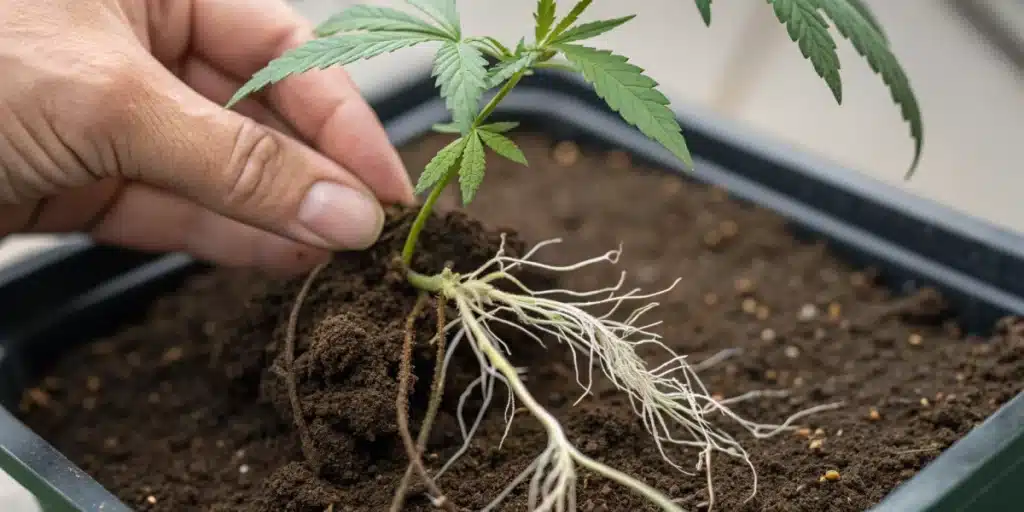
FAQs about Transplant Cannabis Seedlings
What is the best time of day to transplant cannabis seedlings?
Transplanting in the early morning or late afternoon is optimal. During these times, temperatures are cooler, reducing plant stress. This timing allows seedlings to adjust gradually to their new environment, promoting stronger root establishment and minimizing transplant shock for a smoother transition.
Do you have to transplant cannabis seedlings?
While transplanting is not mandatory, it is often beneficial. Moving seedlings to larger pots provides additional space for root growth and better nutrient access. Transplanting helps prevent the roots from becoming cramped, ensuring healthier development and ultimately supporting a more robust and productive cannabis plant.
When should you transplant a cannabis plant after germination?
Transplant your cannabis plant once the first set of true leaves emerges and the root system is well-developed. This stage usually occurs a few weeks after germination. Moving seedlings at this point encourages robust root expansion and prevents the plant from becoming root-bound, supporting continued healthy growth.
What is a proper cannabis germination transplant method?
A proper cannabis germination transplant involves gently transferring the seedling from its starter medium to a larger container with nutrient-rich soil. Carefully handle the fragile roots, maintain consistent moisture, and use a gradual acclimation process. This approach minimizes shock and promotes a smooth transition for the young plant.
When is the optimal time to transplant weed seedlings for robust growth?
Weed seedlings should be transplanted when they have outgrown their initial container and developed a solid root system. Early transplantation prevents root crowding and stress. By moving them at the right time, you ensure they have enough space and nutrients to flourish, ultimately leading to a stronger, healthier plant.


